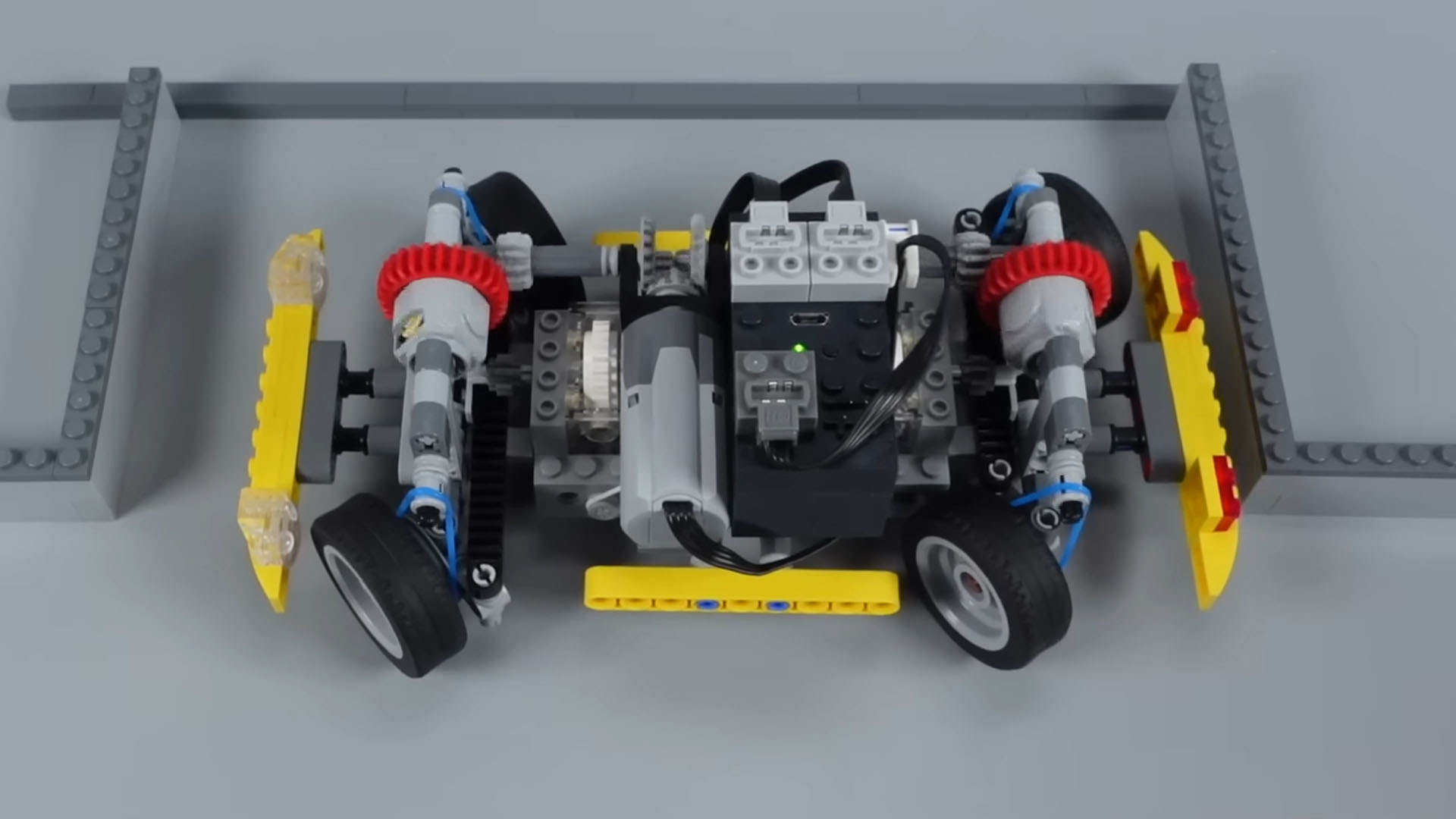

After rashing a wheel once, I generally don’t attempt parallel parking. There has to be a better way, I think to myself. Usually, there is, but if your car is made of Lego, you don’t have to find a parking lot that’s half a mile away. Maybe try giving yourself a telescoping chassis, or aggressive four-wheel steering.
With Lego, this is all very simple, and watching a car get better and better at parking thanks to gradual mechanical evolution is extremely satisfying. That’s generally what the YouTube channel Brick Technology does. In the past, it’s demonstrated various off-road principles and even made several air-powered Lego engines that gradually improve as the videos progress.

The clip starts with improving the basic vehicle’s steering angle. This is a popular modification with drifters to help maintain the skids but in this application, it allows the car to turn a little sharper and get into a slightly smaller space. That’s the other challenge here: after every improvement, the spot gets smaller.
Now, the obvious improvement is four-wheel steering. But that isn’t what comes next. In reality, just moving the power from the rear to the front steer axle makes it more effective.
From there, four-wheel steering is added and you can probably guess what happens. The car can eventually turn all of its wheels 90 degrees and simply slide into a parking spot.

There’s one more upgrade, though, that wouldn’t necessarily be practical for many roadgoing vehicles: the car gets shorter. If there were any rear passengers, they’re gonna miss their legs.
Some real cars have features similar to these. Four-wheel steering is actually relatively common on high-dollar vehicles, although it never allows the vehicle to slide around left and right without any forward movement. The most extreme four-wheel steering system is found on the Hummer EV, and it allows the vehicle to “crab walk” side to side by turning all four wheels in the same direction.

As for vehicles that get longer and shorter, those actually exist too, albeit in concept form. Audi has one called the SkySphere that’s a big two-seat roadster. Electric power makes this sort of thing easier. Instead of flexible fuel lines and driveshafts, you just need to make the power cables flexible. Or have two separate batteries and connect them with a flexible cable. Or just don’t power one of the axles. I actually know nothing about how this might work so take what I just said with a huge grain of salt.
The closest thing we have to a production car that can change its shape considerably is a small electric commuter called the City Transformer made by an Israeli startup. It gets wider for greater stability at high speeds and then goes narrow again in tighter urban environments. Needless to say, this sort of thing is much easier to achieve with Lego.
Got a tip or question for the author? You can reach them here: peter@thedrive.com